Treblinka Visit March 2025
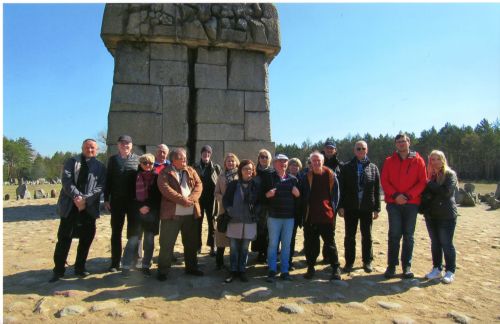
Saturday March 29, 2025
After an early breakfast at the MDM Hotel, at 07:45 hours we were met in the hotel lobby by Ewa Telezynska and Pawel Sawicki, for our momentous trip to Treblinka. Driving us was Pawel in his Toyota Hybrid. We left Warsaw on the motorway heading in the direction of Bialystok.
The first place we visited was the Małkinia station, which is where all transports of Jews destined for Treblinka II passed through, and during the early years of the Second World War was the border point between the Generalgouvernement and Russian territory.
I took a few photographs of the station building, much changed from when I was last here with Lukasz Biedka and Cameron Munro in September 2005. In times gone by, the station building was single storey and had a temporary feel about it. Nowadays it is a two-storey square building, a solid structure.
Pawel asked the local taxi drivers how much they charged for a way-one journey to the site of the former death camp, and they said it was 50 zloty there and 50 zloty back. We got back in the car and drove to the site of the former station at Treblinka. There we found a thoughtful memorial using small concrete slabs, like a railway line, along with several other memorials.
We then proceeded to the former site of the Treblinka death camp. In the car park we met a whole group of people who were attending today's memorial reading. Pawel informed us that today we were going to be film stars, as the reading was going to be filmed for Polish Television. Whilst we were in the car park we were joined by old friend Lukasz Biedka, whom I have known since 2004.
He greeted me with the words 'Dr. Livingstone I presume,' and gave me a tight bear-hug. He was accompanied by his wife Ewa, and historian and author Lukasz Krzyzanowski. We also met Katarzyna Laziuk from Mińsk Mazowiecki and her friend from the United States of America.
We then gathered in a circle by the large memorial, known as the mushroom, where everyone recited the names of Jews that were murdered at Treblinka or who survived. Shirley read out the name of Tema Teigman, whilst I read out the name of Kalman Teigman. This was a really moving experience and very thought-provoking. The weather was glorious, very sunny, and hot. I suggested to Pawel that we take a group photo and Wojtech Szumowski, a film director who was filming today's events for Polish Television, took two large group photos, as a record of the memorial reading. .
We then took the opportunity to photograph the large memorial, some of the individual stones in the Forest of Stones representing communities murdered in Treblinka. I placed a stone on the memorial for Łosice for the relatives of my great friend Warren Grynberg, who were murdered in Treblinka. I then placed a stone on the memorial stone of Janusz Korczak for my editor Anne-Marie Hoppitt, as she asked me to do this for her.
Meanwhile Ewa showed me the stones laid down as markers for the archaeological excavations of the old gas chambers, which was surprisingly large. The old gas chambers only held three gas chambers, compared to the ten for the new gas chambers.
I also took some photographs of the Symbolic Cremation Site and of the ramp with some newly discovered Spanish Riders, the anti-tank obstacles that surrounded the camp. These were given to the SS in the winter of 1943, following the Wehrmacht's defeat at Stalingrad. Pawel also pointed out to me the site of a well, surrounded by green fencing, that was quite near the entrance to the former camp. The entrance was symbolized by two large concrete blocks.
With the sun beating down, I walked and talked with Pawel and Shirley walked with Ewa Biedka and Ewa Telezynska, along the so-called Black Road, which led from the former death camp to the Arbeitslager, which were about a kilometer from each other.
In previous visits we had traveled this route by van, but now the access was denied, and the only way to get there was by walking. Pawel, Lukasz B. and Lukasz K. pointed out and photographed the Jewish gravestones that had been broken up and used in the road construction by the Nazis.
As we walked on down the Black Road, on the left-hand side of the road we passed the site of the former Ukrainian Wachmann's bunker, set deep in the forest. I remembered this structure from my previous visits. We then came to the viewing platform overlooking the quarry, which was the reason the Arbeitslager was constructed in 1941.
We had reached the site of the Arbeitslager itself and I took photographs of the garage with its inspection pit, like in Bełżec, which I had seen in 2000, but of course has now been buried under slag, since the new museum was constructed and opened to the public in 2004. I was also able to take photographs of the Lazarett, the foundations of the Polish inmates' barracks, and the Latrine.
We then took a slow walk back along the Black Road, I again walked and talked with Pawel whilst Shirley was putting the world to rights with Ewa Biedka. On reaching the former death camp site, I took some more photographs of the memorial concrete slabs that symbolize the railway tracks that led to the ramp, and the concrete structures that represent the former camp main entrance.
We then sat down in the car park area, and had lunch with rolls that Ewa had kindly prepared, and very nice they were too. She made me a roll with Kielbasa, and of course water to drink. I had a long chat with Lukasz about the ARC website, which we both worked on, and were members. I explained the origins and history of the group, how I came up with the name, and how originally it was just covering Treblinka, but that it was me back in 2002, who suggested to Mike that it should cover the mass murder program of European Jewry in Bełżec, Sobibór and Treblinka. Hence, ARC – Aktion Reinhardt Camps. The original founders of this group were Mike Peters, Peter Laponder and Chris Webb (myself).
As a group we then visited the amazing new project that Ewa T. and Pawel are major contributors to; 'The Wall of Names.' This vast undertaking will eventually show the full names and ages of all those that were murdered at Treblinka. We had time to look around the small museum. Whilst small this museum had some fascinating artifacts, including a fine model of the death camp made by our old friend Peter Laponder, which I mentioned in earlier visits. There were also on display a reddish coloured tile with a Star of David, which I believe was the logo of the company making the tiles.
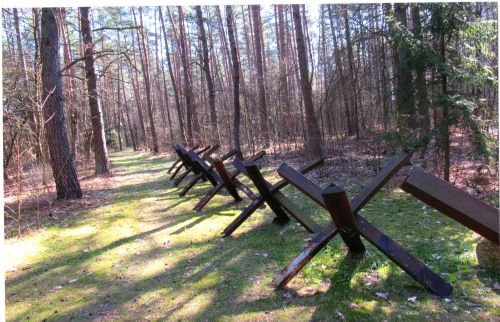
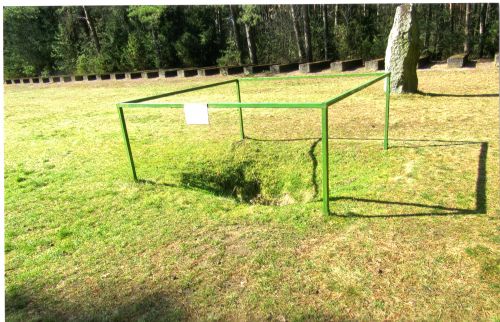
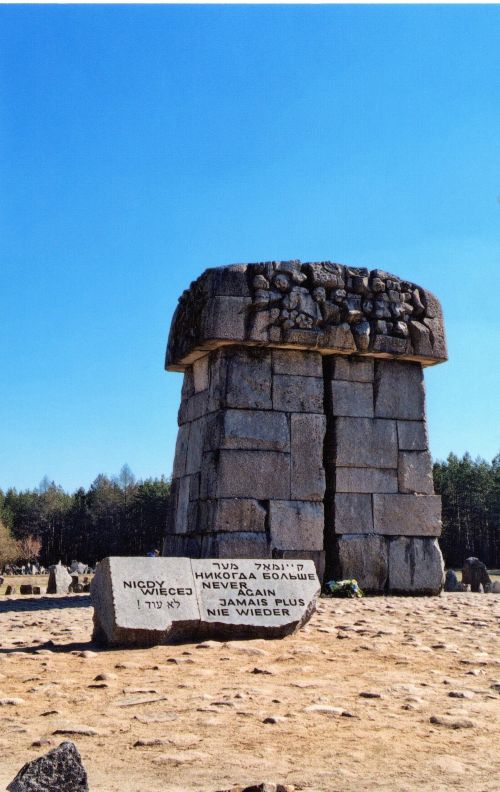

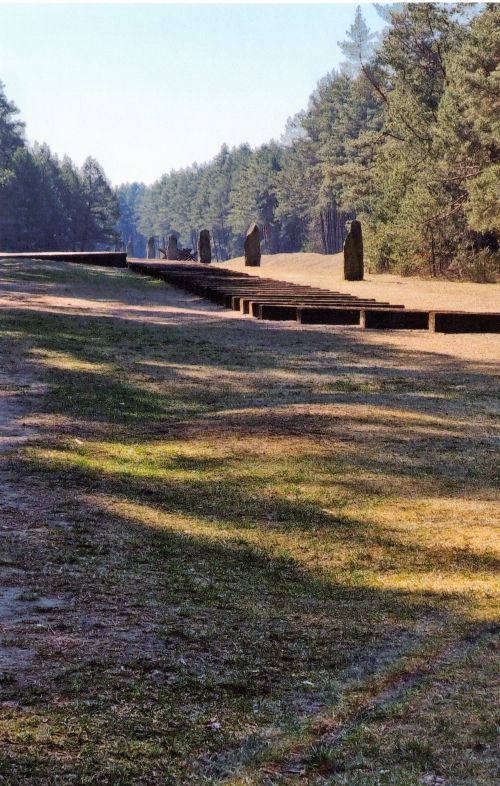

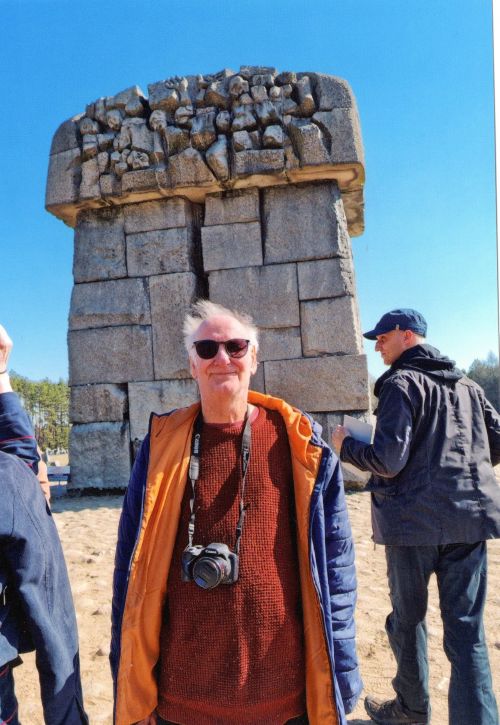
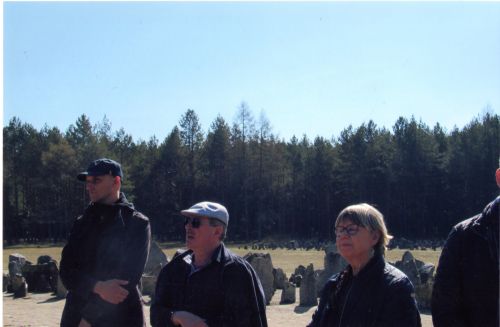

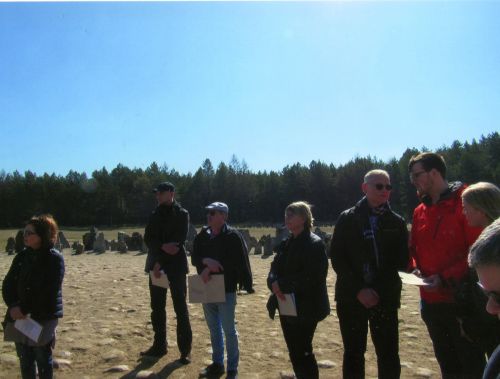
Another Group Photo
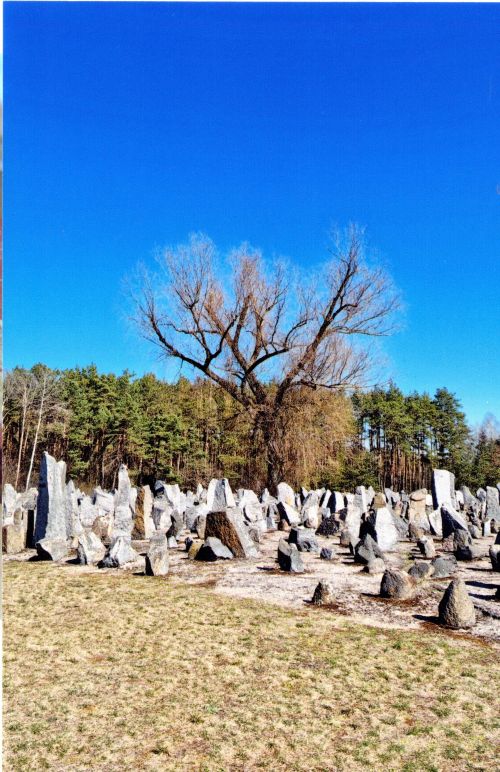
Forest of Stones and Tree
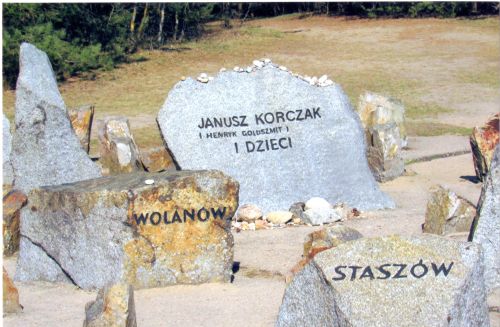
Memorial Stone for Janusz Korczak and The Children
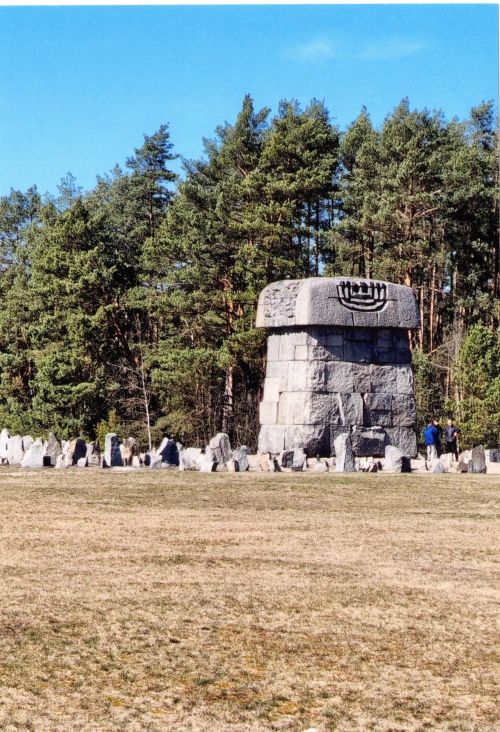
Mushroom Memorial from the Rear
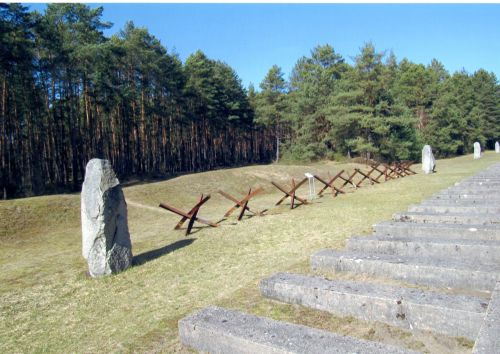
Spanish Riders and the Symbolic Train Tracks
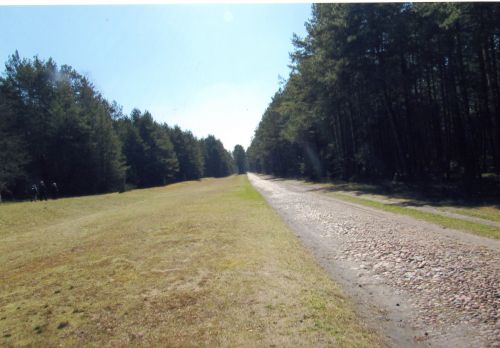
The Black Road to the Treblinka Arbeitslager
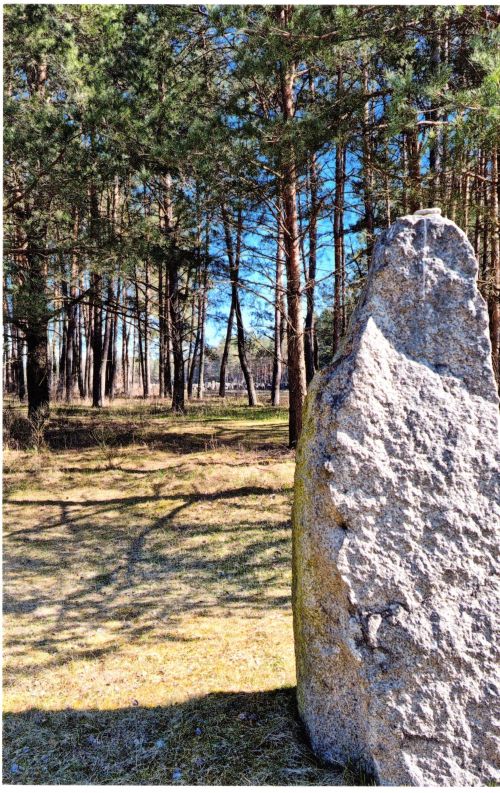
Treblinka Camp Boundary
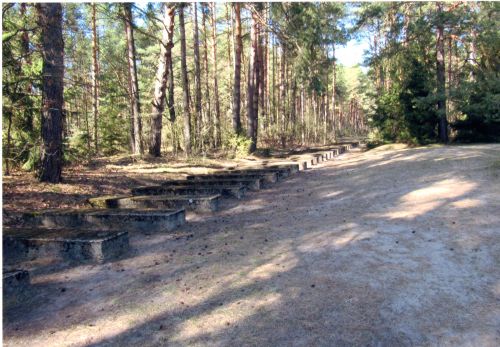
Symbolic Train Tracks into the Forest
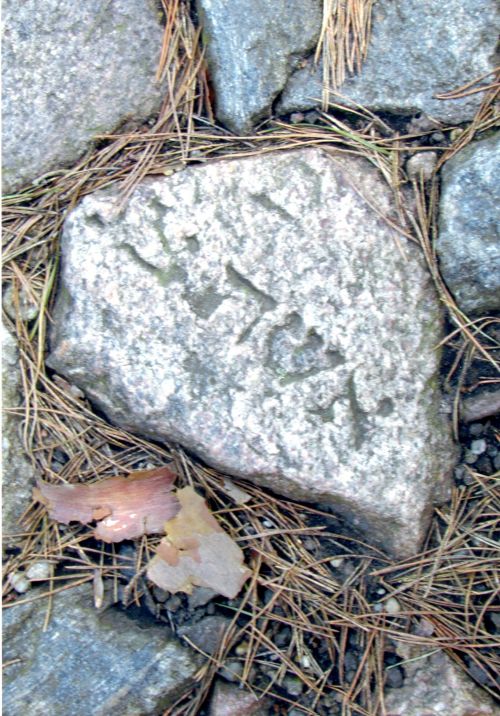
Fragment of Jewish Gravestone on the Black Road

Treblinka Museum - Gas Chamber Tile
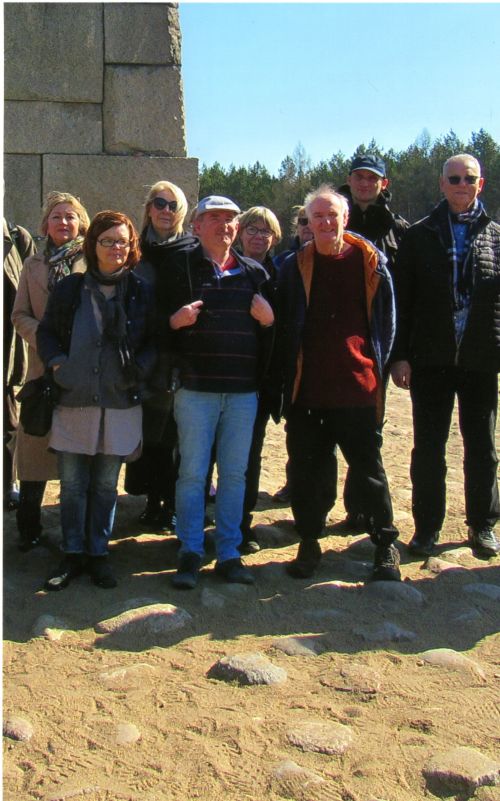
Ewa Biedka, Lukasz Biedka, Ewa, Chris, Luke and Pawel by the Mushroom Memorial Cropped by Chris Webb
All photographs Chris Webb and Shirley Webb, Group Photo and Cropped photograph taken by Wojtech Szumowski
© Holocaust Historical Society June 26 ,2025

